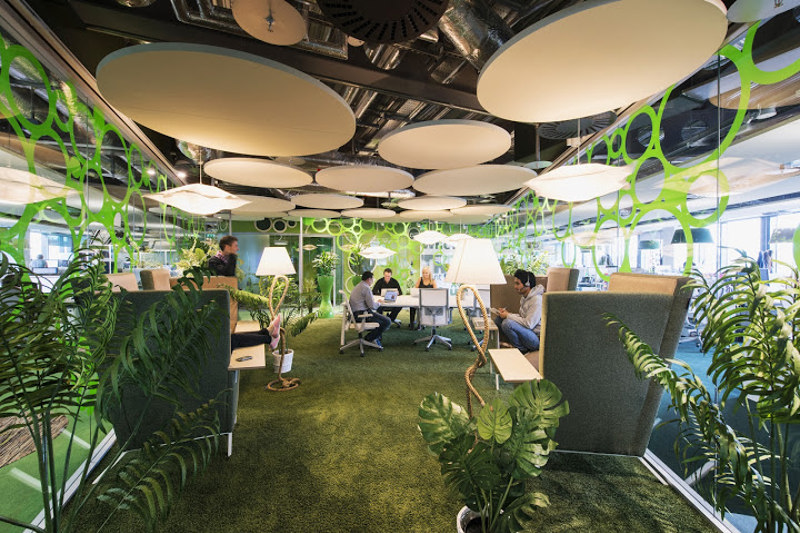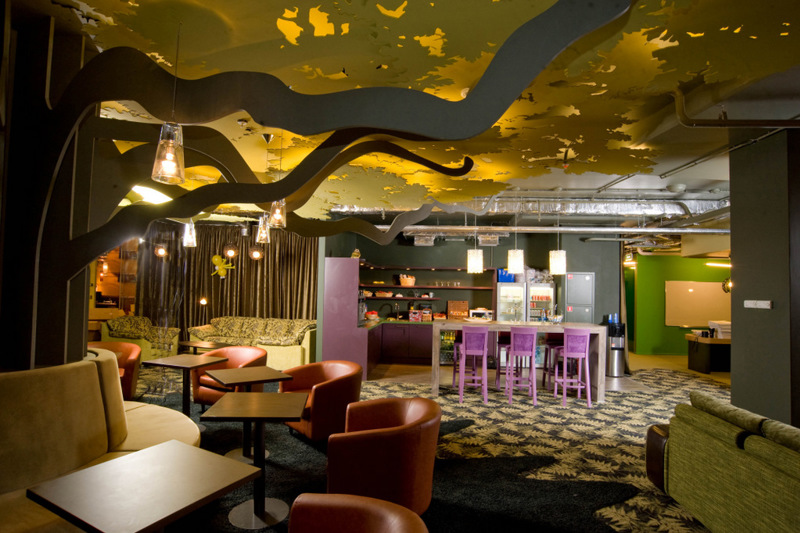
If you ask ten different people to define workplace culture, you’ll get ten completely different answers. But in their answers, people often refer to something that relates to their ‘physical workplace’ when they try to describe what makes their company culture unique. When a good proportion of people are now working remotely, what is the workplace now? — and can we even continue to use that term? Back in 1982, management researchers Deal and Kennedy defined organisation culture as ‘the way things are done around here’. In saying this, they meant that the things that make a workplace culture unique are the distinctive behaviours, systems, processes, customs or practices that really set one workplace apart from another.
Some companies define their culture and literally carve it in stone. In other places, the culture is definitely there, but it’s informal and something that can only be learned or sensed whilst actually working there. Culture covers so many parts of the employee experience — from the level of mutual respect between colleagues, to the work ethic, whether management have an open-door policy and even whether a drinks trolley with Mai Tai cocktails comes around on a Friday afternoon. At opposite ends of the spectrum, people historically spoke about ‘big corporations’ having a rigid, hierarchical, dictatorial and bureaucratic culture based on strict rules and protocols. In contrast are ‘hippy like’ companies that started life in garages and went on to become some of the most famous businesses in the world. Famous for their technology, their flat structure and their informal approach to work.

Ask people what it’s like to work at Google and (before COVID) they would have quickly talked about their quirky offices, unlimited free food, freshly prepared sushi on-demand, sleep pods and TGI-Friday drinks events that took place on a Thursday afternoon. With inspirational, charismatic founders, the workplace was a focal point for building, reinforcing and communicating that culture. After all, design and architecture can make a total impression on us. When you walk into a firm of lawyers, you often get a different vibe from when you walk into the offices of an ad-agency or a toy company. Which is why the shift to hybrid and remote work may have given workplace culture an extensional crisis when the physical office no longer centre stage. Or has it?

Pharmaceutical company Genentech employs nearly 14,000 people around the world. It has long topped the ‘best place to work’ charts in the USA where its HQ is based. In the mid-2000s, the company was heavily profiled for its informal work culture, extensive office-based perks such as free meals, daycare for young children and Friday evening parties (known as Ho-Hos), that allowed its people to unwind from the serious work of developing cures for complex diseases. Its CEO and other leaders were famed for their imaginative Halloween costumes and for staging photobombing in the offices of rival pharmaceutical companies. Doesn’t sound like your regular pharmaceutical company, does it?
The pandemic meant a big change for Genentech and now only about half of its workforce spend some time on site in any given week. So, what has happened to workplace culture in a place where the office quite literally was the centre of their universe? According to Cynthia Burks, Chief People and Culture officer, “the pandemic has helped the company reinforce its culture”. Like many organisations, people now come together online, with virtual ‘office hours’ where the many employees come together with leadership for motivation, innovation show-and-tells and performance updates. Protected time was implemented every day for all, meaning that calendars are blocked between 12:00pm and 2:00pm. This gives people time for breaks and uninterruptible time for head-down work. As their offices have started to re-open, there isn’t a mandated amount of time to be in the office. Teams can choose and develop their own agreements. According to Burks, “the pandemic has really allowed us to think about the experiences of people who are not tied to the main campus; culture doesn’t live in a place, it lives in our values.”
Not all leaders are so optimistic. Brian Kropp, vice president of global IT research firm Gartner has expressed concerns about what hybrid working means about the shared concept of culture. In fact, given that most people will spend most of their daily work collaborating and communicating in ‘micro teams’, he believes that this will see the formation of lots of different micro-cultures within in a single organisation. This is a view shared by Michael Burchell, an HR strategy consultant who formerly worked at the Great Place to Work Institute. He predicts a world where individual teams increasingly decide where they work and when. That could mean a death knell for the ‘monolithic’ culture seen across some organisations.
One essential part of workplace culture that can’t be ignored is the increasingly need to keep employee mental health in-check, especially when much of the work is happening behind closed doors. Even with performance management check-ins between employees and managers, it’s now harder to spot the signs of burnout from a distance. Therefore, today’s most valuable cultural currency is less about free cappuccinos and ping pong tables and more about work-life balance, self-care, mindfulness and the ability to make time for exercise and wellness.
One element of workplace culture that people are missing are the informal, incidental and unplanned interactions that can happen in the physical workplace. “These are the mortar between the bricks of a corporate community”, says Kausik Rajgopal, Global Chief HR Officer for PayPal. The company has a popular coffee shop at its HQ that allowed just these kinds of interactions to happen, yet the space has been left mostly unused and empty since the beginning of the pandemic. The company has responded to restore some of the social interaction and serendipitous discovery and networking that used to take place in the cafe.
Virtual workshops and meetings have been used as a means to bring people together. A series of online events have featured public speakers to address and debate issues around diversity and other social issues. Other investments include wellness days where everyone was allowed to disconnect from email, even during the working day. All in aid of reducing burnout and helping to manage the ‘endlessness’ feeling that can come from working a home without sufficient social interaction.
In conclusion, it seems the hybrid workforce doesn’t mean a death sentence for workplace culture. In contrast, it has been the catalyst for the evolution of culture, moving its creation and origination from the clutches of upper management and into the hands of the many teams across the organisation. One thing’s for sure — in the absence of physical common areas and opportunities for informal meeting and play, those with a true interest to keep the cultural fire burning will need to find innovative ways to keep it alive and kicking — whether through the occasional in-person event or through online get-togethers. Make it happen.
Explore more...
Share this page
Ready to transform your HR & Payroll process?




